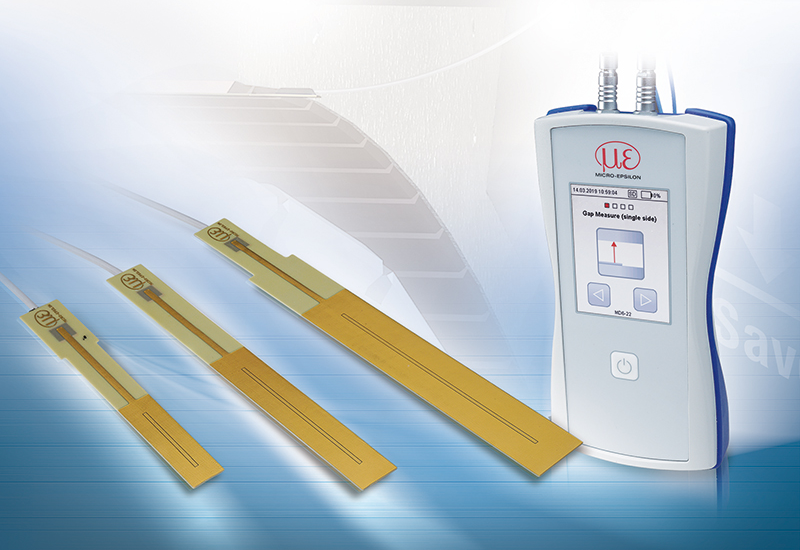Precision sensor manufacturer Micro-Epsilon has launched a new capacitive measuring device for mobile, high precision gap and distance measurements. Robust, lightweight and easy to use, the capaNCDT MD6-22 dual channel handheld gauge is suitable for use in industrial commissioning, service and maintenance tasks.
 The capaNCDT MD6-22 is a capacitive measuring device designed for mobile, high precision gap and distance measurements.
The capaNCDT MD6-22 is a capacitive measuring device designed for mobile, high precision gap and distance measurements.
The capaNCDT MD6-22 measures gaps to micron accuracy. Measurements are possible on all electrically conductive targets. The robust design of the device makes it ideally suited for use in environments where magnetic fields are present. Typical applications include maintenance of turbines and engines, rotor gap monitoring in wind turbines, airframe construction and joining processes in the automotive industry, as well as alignment of rollers in web processing lines such as paper and plastics.
The complete measuring system weighs just 500 g and consists of a dual channel handheld gauge, a capacitive capaNCDT sensor with integrated cable (up to 4 m in length), carry case, power supply and magnetic holder for on-site mounting. The device is compatible with any capacitive sensor from the Micro-Epsilon product range. Battery life is up to five hours.
The capaNCDT MD6-22 provides a touchscreen display and is supplied with pre-programmed features such as single sided or double sided measurement and automatic gap detection, which simplifies the parallel alignment of flat sensors for double-sided measurements. The memory function ensures increased flexibility, enabling the user to determine the measurement values at different locations, store them on a micro SD card (not included) and use this data for future evaluation or to identify trends for condition monitoring tasks.
Inserted into a gap, the flat sensors determine the gap width based on the active measuring area. Gaps up to 12 mm can be detected reliably. The device offers three different measuring modes: gap measurement (single-sided), where one or two flat sensors are used; gap measurement (double-sided), where one flat sensor is used; and raw measurement, where two distance sensors can be evaluated together.